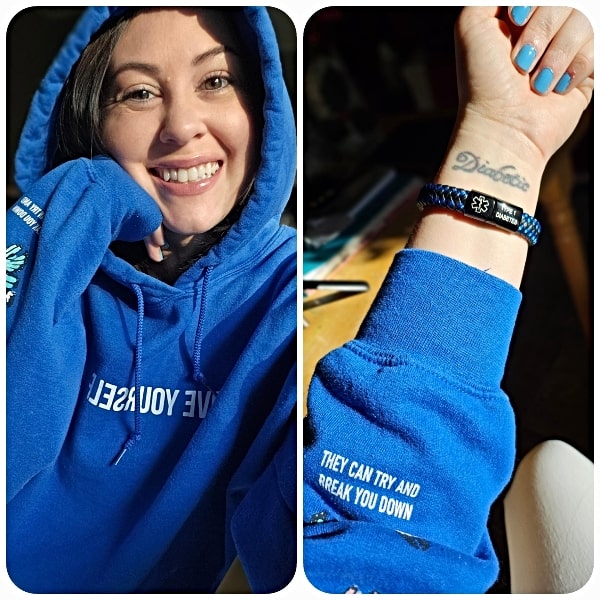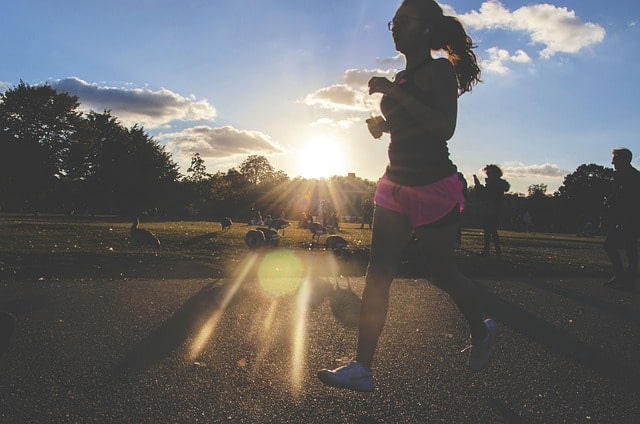
Hi, I’m Maisha
Hi, I’m Maisha.
I’ve lived with type 1 diabetes for over 20 years now. I was diagnosed at 15 years old, right at the start of high school—arguably one of the most confusing, emotionally intense times in life. And let me tell you, it hit hard. That first year was rough.
At 19, I became pregnant. It wasn’t planned, but the moment I found out I was carrying a life inside me, something shifted. I became more diligent about my diabetes than I had ever been before. I didn’t want to harm my unborn baby, so I took it seriously. Ironically, that pregnancy was the healthiest I had ever been in my diabetic life.
But once my son was born, it was like I threw all that effort out the window.
The Postpartum Spiral
I never stopped taking insulin—I’ve literally never gone a day in my life without it—but I wasn’t checking my blood sugar. I started drinking heavily. I struggled with alcohol and postpartum depression. And honestly? I didn’t care about myself. My well-being felt like an afterthought.
By my mid-to-late twenties, things got really bad. I was in and out of the hospital constantly—kidney infections, diabetic ketoacidosis (DKA), the works. I had at least three DKA episodes that landed me in the ICU. But there’s one hospital visit I’ll never forget.
I was in the hospital for seven days. For six of those, I was in a comatose state. I don’t remember my visitors. I barely remember anything—except waking up long enough to throw up and pass right back out.
That was my wake-up call. The turning point. I remember thinking:
I could have died.
A High-Functioning Mess
When I got out of the hospital, I knew I had to change. But it was far from easy. I was still dependent on alcohol. I was what they call a “high-functioning alcoholic.” I held a job. I took care of my son. If you asked anyone around me, they’d probably say I was doing just fine.
But my body knew the truth. I couldn’t keep up.
So I quit drinking.
Cold turkey.
The very next day, I started checking my blood sugar again. And I didn’t stop. For the past eight years, I’ve checked my blood sugar every single day, multiple times a day. That consistency changed everything—but it also revealed just how chaotic diabetes could be even when you’re “doing everything right.”

The Roller Coaster of Management
If you live with type 1 diabetes, you know what I mean when I say it’s a sick game sometimes. You do all the “right” things, only to crash into a low. You treat the low, and then bam—a steep high hits right after. It’s a constant up-and-down roller coaster that doesn’t just affect your numbers…
It affects your ENTIRE BEING—mentally, emotionally, physically.
Back then, I didn’t know it, but my body was in a perpetual state of fight or flight. Any little noise, any small trigger in my environment, would send me into an overwhelming stress response. I was overstimulated ALL the time, merely hanging on by a thread.
Despite all of that, I never had a bad attitude about it. I mean, “it is what is is, right?” I remained grateful. Grateful to be alive. Grateful that God was with me on this journey. But I also reached a point where I felt like I had been a faithful student to diabetes harsh and relentless teachings.
Lessons of resilience, patience, discipline & consistency.
After feeling as if I had mastered these lessons, I began to outwardly question God’s reasoning for me to continue living with these brutal demands of my disease.
“God, What Else Do You Want Me to Learn?”
About three years ago, I prayed and said:
“God, if there’s anything else you want me to learn from this illness, I’m ready. Otherwise, I’d really love to transcend this. I feel like I’ve done everything I can.”
And then—no joke—a few days later, something happened.
I was scrolling through the Gaia network on my TV when I came across a documentary called The Diabetic Solution. What caught my attention was that it was about type 1 diabetes, not type 2 like so many other resources out there.
I was nervous. Curious. Skeptical. But I pressed play.
And it completely changed my life.

Enter Dr. Bernstein
The documentary featured Dr. Richard Bernstein, an 80-something-year-old type 1 diabetic who was diagnosed as a child, before home blood glucose meters even existed. This man was using giant syringes and had to sterilize them for every shot.
Dr. Bernstein wasn’t originally a doctor—he was an engineer. But he managed to get his hands on a professional-grade blood glucose reader and started tracking his numbers. He tested how different foods affected him. What he discovered was revolutionary:
Carbohydrates were the main culprit in blood sugar instability.
But when I was diagnosed, every doctor told me, “You can eat whatever you want as long as you take insulin for it.” They gave me pancakes and yogurt in the hospital! Of course I believed them. They were the experts. But it turns out…
They were wrong.
The Truth About the System
The truth is, the pharmaceutical industry profits from us being sick. It’s not built on healing people—it’s built on keeping us reliant on medication. If we all got better, they’d lose billions.
Dr. Bernstein tried to publish his findings. He went straight to the president of the American Diabetes Association—his own doctor at this time—and presented all his data. You’d think that would be a game changer.
But you know what that doctor said?
“If I published this, I’d have no patients left.”
That’s when Dr. Bernstein realized no one was going to help him share the truth. So what did he do? He went back to school—became a doctor—just so he could publish the research himself.
Now that’s dedication!

A New Lease on Life
After watching the documentary, I ordered his book The Diabetes Solution immediately. I devoured it. And then I started applying it to my own life.
At the time, my A1C was around 7.0—which isn’t terrible, but it wasn’t ideal either. After just three months of following Dr. Bernstein’s low-carb, precision-based approach, I went back to the doctor.
My A1C had dropped to 5.7.
Not only that—I’d lost 15 pounds effortlessly, and my doctor was amazed. She told me that 5.7 was essentially the cutoff for non-diabetics.
But the numbers weren’t even the best part.
My mental health improved. My emotional regulation stabilized. I felt clearer, lighter, more at peace. The constant blood sugar spikes and crashes were gone. Even when I had a low, it was gradual—not a sudden, scary plunge. My body was finally relaxing after years of chronic tension.
Peace in My Body, Peace in My Life
That peace? It’s something I had never known. I realized that my body had been in survival mode for two decades. Always bracing. Always adjusting. Never truly resting.
Now, I experience stillness. Calm. Confidence.
And if a stressful situation does pop up, I don’t spiral like I used to. I handle it. Gracefully.
I truly believe Dr. Bernstein was sent to me by God. He gave me the tools to reclaim my health—and ultimately, my life.
Why I’m Sharing This
I’m not here to tell anyone what to do. Every diabetic’s journey is unique. But if you’ve ever felt lost, discouraged, or downright exhausted from the constant battle of managing type 1, I want you to know:
You’re not alone.
There is hope. There is a way to gain control—not just of your numbers, but of your mind, your emotions, and your entire experience of living with diabetes.
I’ll be sharing more of my journey here on the blog. The highs, the lows, the insights, the breakthroughs. My goal is simple:
To help others like me find peace, power, and freedom in their bodies again.
Because we deserve that.
Because you deserve that.
Stay tuned.
With love and light,
Maisha Marie

